The Best Types of Rice in India
1.Basmati Rice
Basmati rice is one of the most popular and widely recognized varieties of rice, known for its long grains, delicate aroma, and distinct flavor. Here are some key features and information about Basmati rice:
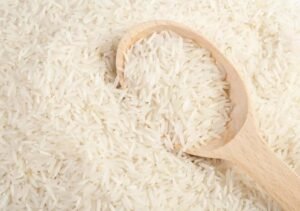
- Origin: Basmati rice is believed to have originated in the Indian subcontinent, particularly in the foothills of the Himalayas. The word “Basmati” is derived from the Sanskrit word “vasmati,” meaning fragrant.
- Grain Characteristics: Basmati rice grains are long, slender, and aromatic. When cooked, the grains remain separate and fluffy, making it ideal for pilafs, biryanis, and other rice-based dishes.
- Aroma and Flavor: Basmati rice is prized for its delicate aroma, which is often described as nutty or floral. This natural fragrance enhances the overall taste of dishes and adds depth to the flavor profile.
- Cultivation: Basmati rice is primarily grown in the Indian states of Punjab, Haryana, Uttarakhand, and parts of Uttar Pradesh and Jammu & Kashmir. It requires specific soil and climatic conditions, including fertile soil, ample water, and a temperate climate with distinct seasons.
- Varieties: There are several varieties of Basmati rice, each with its unique characteristics. Some of the popular varieties include Basmati 370, Basmati 386, Pusa Basmati, and Traditional Basmati. Each variety may have slight differences in grain length, aroma, and cooking properties.
- Culinary Uses: Basmati rice is widely used in Indian, Pakistani, Middle Eastern, and Central Asian cuisines. It is the preferred choice for making dishes such as biryani, pulao, pilaf, fried rice, and rice pudding (kheer).
- Global Demand: Basmati rice has gained international recognition and is exported to various countries around the world. It is favored by chefs and consumers for its superior quality and premium attributes.
- Quality Standards: Basmati rice is subject to stringent quality standards to ensure authenticity and purity. Various certification bodies, such as the Agricultural and Processed Food Products Export Development Authority (APEDA) in India, regulate the production, packaging, and export of Basmati rice.
2.Non-Basmati Rice
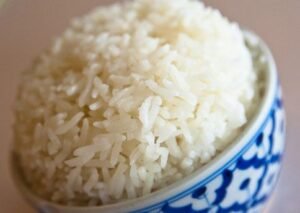
Non-Basmati rice refers to a diverse group of rice varieties that do not fall under the category of Basmati rice. Unlike Basmati rice, which is known for its long grains, delicate aroma, and distinct flavor, non-Basmati rice comes in various shapes, sizes, and textures. Here are some key features and information about non-Basmati rice:
- Varieties: Non-Basmati rice encompasses a wide range of rice varieties cultivated in different regions of India. Some of the popular non-Basmati rice varieties include:
- Sona Masuri: Grown in the southern states of India, Sona Masuri rice is medium-grain rice known for its lightweight and aromatic qualities. It is commonly used in everyday cooking, especially in South Indian cuisine.
- Ponni Rice: Ponni rice is a medium-grain rice variety primarily cultivated in the southern states of Tamil Nadu and Karnataka. It has a soft texture and is favored for making dishes like idli, dosa, and steamed rice.
- Swarna Rice: Swarna rice is a short-grain rice variety widely cultivated in states like Uttar Pradesh, Bihar, and West Bengal. It is known for its robust flavor and is commonly used in dishes like khichdi and pulao.
- Jeera Rice: Jeera rice, also known as cumin rice, is a fragrant rice dish flavored with cumin seeds. It is popular in North Indian cuisine and is often served as an accompaniment to curries and gravies.
- Kolam Rice: Kolam rice is a medium-grain rice variety grown in the states of Odisha and West Bengal. It has a soft texture and is used in dishes like rice pudding and fried rice.
- Grain Characteristics: Non-Basmati rice grains vary in size, shape, and texture depending on the variety. They may be short, medium, or long-grain, and their texture can range from soft and fluffy to slightly sticky when cooked.
- Culinary Uses: Non-Basmati rice is used in a wide range of dishes across Indian cuisine. It serves as a staple food in households and is used to make dishes like plain steamed rice, biryani, pulao, khichdi, and various rice-based desserts.
- Cultivation: Non-Basmati rice is cultivated in different agro-climatic regions of India, including the plains, deltas, and coastal areas. It is grown using both traditional and modern agricultural practices, depending on the region and farming techniques employed by farmers.
- Global Demand: While Basmati rice is more popular in international markets, certain varieties of non-Basmati rice are also exported from India to other countries. These varieties may cater to specific culinary preferences and requirements of consumers in different regions.
3.Jasmine Rice
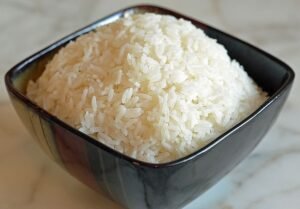
Jasmine rice, also known as Thai fragrant rice, is a type of long-grain rice known for its fragrant aroma and slightly sticky texture when cooked. While Jasmine rice is not native to India, it is consumed in certain parts of the country, particularly in regions influenced by Thai cuisine. Here’s some information about Jasmine rice:
- Origin: Jasmine rice is primarily cultivated in Thailand, Cambodia, Laos, and Vietnam. It gets its name from the jasmine flower due to its subtle floral aroma, which is reminiscent of the flower’s fragrance.
- Grain Characteristics: Jasmine rice grains are long, slender, and translucent with a slightly sticky texture when cooked. They have a soft, fluffy consistency and a delicate flavor profile, making them a versatile ingredient in various dishes.
- Aroma and Flavor: The characteristic aroma of Jasmine rice is often described as floral, nutty, or popcorn-like. This natural fragrance adds depth and complexity to dishes and enhances their overall appeal.
- Culinary Uses: Jasmine rice is a staple ingredient in Southeast Asian cuisine, particularly Thai dishes such as green curry, red curry, and pad Thai. It is also commonly served alongside grilled meats, stir-fries, and seafood dishes.
- Cooking Methods: Jasmine rice can be cooked using various methods, including steaming, boiling, or using a rice cooker. It requires a specific ratio of water to rice to achieve the desired texture and consistency.
- Nutritional Profile: Like other types of rice, Jasmine rice is primarily composed of carbohydrates and provides energy. It is low in fat and protein but contains essential vitamins and minerals such as thiamine, niacin, and magnesium.
- Availability: While Jasmine rice is not as widely consumed in India as Basmati or non-Basmati rice varieties, it can be found in specialty grocery stores, supermarkets, and online platforms in regions with a significant demand for Thai cuisine or imported ingredients.
Red Rice
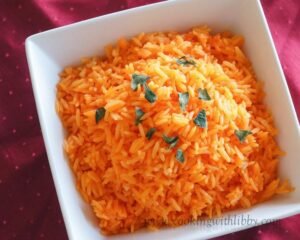
Red rice is a whole grain rice variety that is known for its distinctive red husk and higher nutritional value compared to white rice. Here’s some information about red rice:
- Origin: Red rice is cultivated in various regions around the world, including parts of India, Sri Lanka, Thailand, and Bhutan. In India, it is grown in states like Kerala, Karnataka, and West Bengal.
- Grain Characteristics: Red rice grains have a reddish-brown or deep maroon color due to the presence of natural pigments in the outer layer of the rice kernel. The grains are typically short or medium in length and have a slightly chewy texture when cooked.
- Nutritional Benefits: Red rice is considered a whole grain and is higher in fiber, vitamins, and minerals compared to white rice. It contains antioxidants, phytonutrients, and essential nutrients such as iron, zinc, and magnesium. The red color of the rice comes from compounds called anthocyanins, which have been linked to various health benefits, including reducing inflammation and promoting heart health.
- Culinary Uses: Red rice is used in a variety of dishes in Indian cuisine, especially in regions where it is cultivated. It can be cooked and served as a standalone dish or used as an ingredient in salads, pilafs, and mixed rice dishes. In Kerala, red rice is commonly used to make traditional dishes like matta rice kanji (rice porridge) and red rice idiyappam (string hoppers).
- Cooking Methods: Red rice requires longer cooking times and more water compared to white rice due to its higher fiber content and denser texture. It can be cooked using methods such as boiling, steaming, or using a rice cooker.
- Availability: Red rice is typically available in specialty grocery stores, health food stores, and online platforms that specialize in organic or whole grain products. In regions where it is cultivated, it may also be found in local markets and supermarkets.
Black Rice
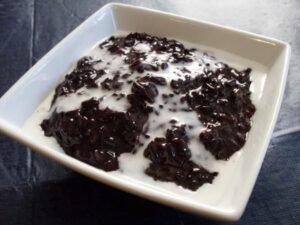
Black rice, also known as forbidden rice or Kavuni Arisi in Tamil Nadu, is a type of whole grain rice with a deep black or purple-black color. Here’s some information about black rice:
- Origin: Black rice is believed to have originated in regions of Asia, particularly in countries like China, India, and Indonesia. Historically, it was considered a rare and exotic grain reserved for royalty and nobility, hence the name “forbidden rice.”
- Grain Characteristics: Black rice grains are short to medium in length and have a dark outer bran layer that gives them their distinctive color. When cooked, black rice retains its dark hue and has a slightly chewy texture and nutty flavor.
- Nutritional Benefits: Black rice is considered a whole grain and is rich in antioxidants, vitamins, and minerals. It contains high levels of anthocyanins, the same pigments found in blueberries and other purple foods, which have been linked to various health benefits, including reducing inflammation and lowering the risk of chronic diseases such as heart disease and cancer. Black rice is also a good source of fiber, protein, and iron.
- Culinary Uses: Black rice is used in a variety of culinary applications, including both savory and sweet dishes. In Indian cuisine, it is commonly used to make traditional desserts like Kavuni Arisi Payasam (black rice pudding) and Kavuni Arisi Murukku (black rice crackers). It can also be used in savory dishes such as rice salads, stir-fries, and pilafs.
- Availability: Black rice is available in specialty grocery stores, health food stores, and online platforms that specialize in whole grain products. It may also be found in some supermarkets and local markets, although availability can vary depending on the region.
- Cooking Methods: Black rice requires longer cooking times and more water compared to white rice due to its higher fiber content and denser texture. It can be cooked using methods such as boiling, steaming, or using a rice cooker.
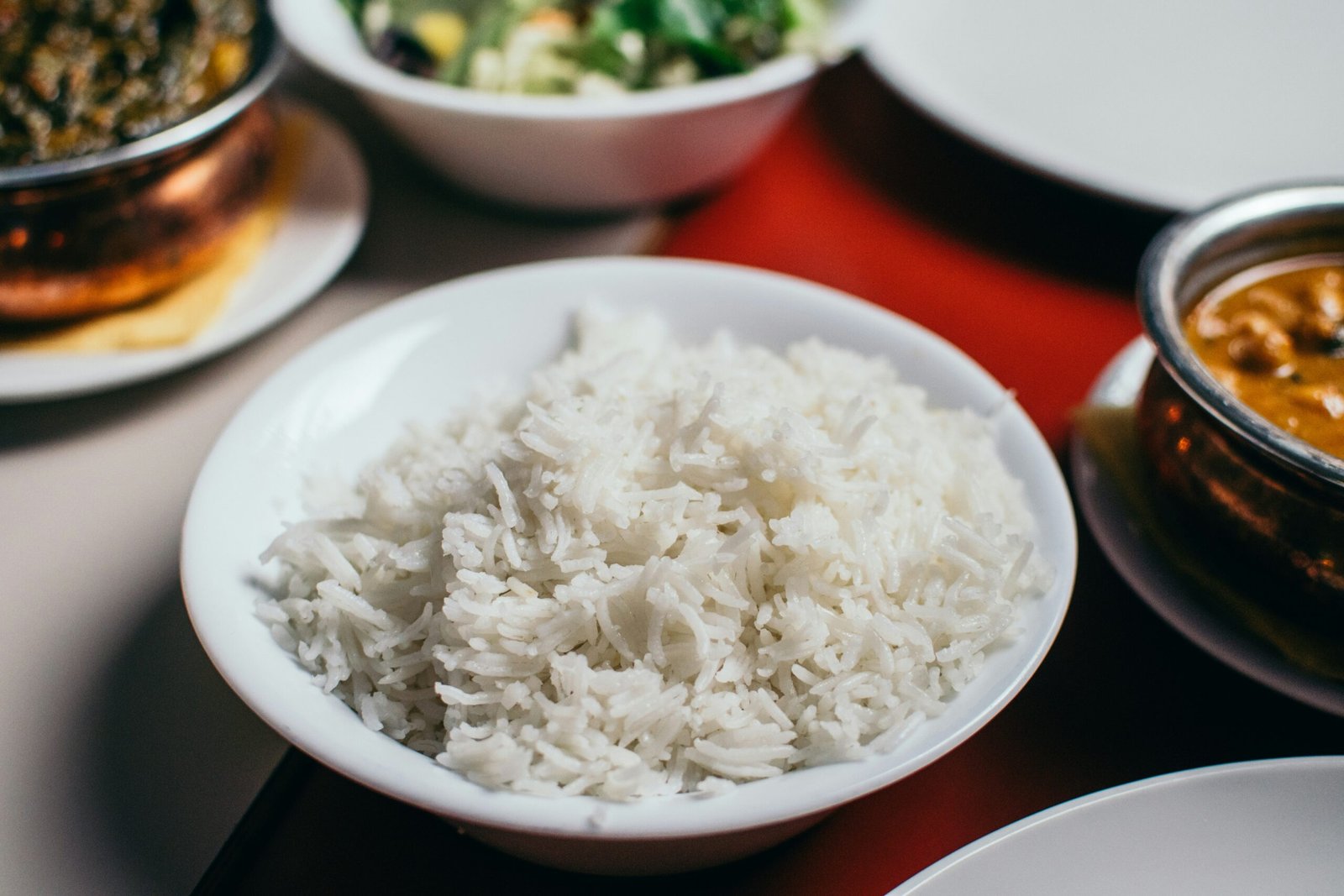
1 thought on “The Best Types of Rice in India-Everyone Must Know”